
European influence in Afghanistan has been present in the country since the Victorian era, when the competing imperial powers of Britain and Russia contested for control over Afghanistan as part of the Great Game.

The Baloch or Baluch are a nomadic, pastoral, ethnic group which speaks the Western Iranic Balochi language and is native to the Balochistan region of South and Western Asia, encompassing the countries of Pakistan, Iran, and Afghanistan. There are also Baloch diaspora communities in neighbouring regions, including in Central Asia, and the Arabian Peninsula.

Helmand, also known as Hillmand, in ancient times, as Hermand and Hethumand, is one of the 34 provinces of Afghanistan, in the south of the country. It is the largest province by area, covering 58,584 square kilometres (20,000 sq mi) area. The province contains 18 districts, encompassing over 1,000 villages, and roughly 1,446,230 settled people. Lashkargah serves as the provincial capital. Helmand was part of the Greater Kandahar region until made into a separate province by the Afghan government in the 20th century.

The Brahui, Brahvi, or Brohi are an ethnolinguistic group of pastoralists principally found in Pakistan, and to a smaller extent in Afghanistan and Iran. They speak Brahui, which belongs to the Dravidian language family.
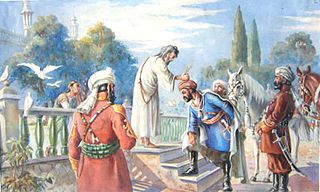
Popalzai or Popalzay, also known as Popal, are Durrani Pashtuns of Afghanistan. The Popalzai are part of the Zirak confederation of Pashtun tribes. The origin of the Abdali forefathers of the Sadozai tribe is probably the Hephthalites. The forefathers of Ahmad Shāh Durrānī, the founder of the Durrani Empire, were from the Sadozai tribe which is a subtribe of the Popalzai. According to Mohan Lal, the Zirak line begins with Sulaiman Zirak Khan, who was the father of Popalzai, Barakzai, and Alakozai. The tribe's origin is Kandahar, Afghanistan. The majority of the Popalzai live in the southern areas of Afghanistan such as in Kandahar, Helmand or Uruzgan. Some members of the Popalzai tribe have migrated with their families to the European Union, North America, and Oceania. Notable members of the Popalzai tribe include Hamid Karzai and his extended family, Karim Popal, Naim Popal, and Khalida Popal.
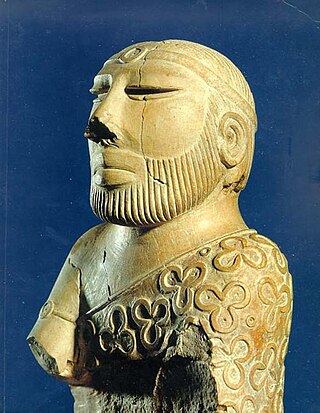
The history of Balochistan refers to the history of the Balochistan region of Pakistan, Iran and Afghanistan. Vague allusions to the region were found in Greek historical records of around 650 BCE. Prehistoric Balochistan dates to the Paleolithic.
Mazari is a Baloch tribe in Pakistan. Mazari is derived from the Balochi word mazar, which means "Tiger" in the Balochi language. Rojhan-Mazari, a town in the Rajanpur District of the Punjab near the inter-provincial borders of Balochistan, Sindh and Punjab, is the stronghold and the headquarter of Mazari tribe.
The Sanjrani is a sub-branch of the Baloch tribe settled in the Sindh and Balochistan provinces of Pakistan.
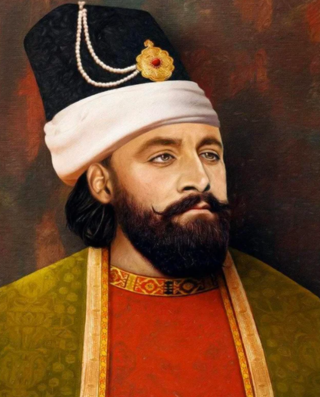
Panah Ali Khan Javanshir was the founder and first ruler of the Karabakh Khanate under Persian suzerainty.

Balochistan or Afghan Baluchistan is an arid, mountainous region that includes part of southern and southwestern Afghanistan. It extends into southeastern Iran and western Pakistan and is named after the Baloch of Afghanistan.
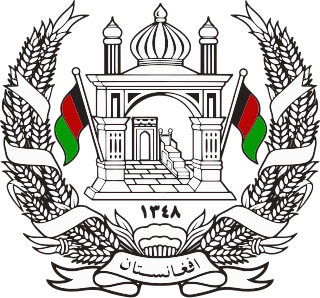
The Barakzai dynasty, also known as the Muhammadzai dynasty, ruled what is now Afghanistan from 1823 to 1978, when the monarchy ended de jure under Musahiban Mohammad Zahir Shah and de facto under his cousin Sardar Mohammad Daoud Khan. The Barakzai dynasty was established by Dost Mohammad Khan after the Durrani dynasty of Ahmad Shah Durrani was removed from power. As the Pahlavi era in Iran, the Muhammadzai era was known for its progressivist modernity, practice of Sufism, peaceful security and neutrality, in which Afghanistan was referred to as the "Switzerland of Asia".
Sardar Dost Muhammad Khosa is a Pakistani politician affiliated with Pakistan People's Party. He was appointed as the Caretaker Chief Minister of Punjab on 12 April 2008, serving until 8 June 2008. He joined the Pakistan People's Party (PPP) on 22 December 2018.
Sardar Zulfiqar Ali Khan Khosa is a Pakistani political leader, former senator and former Governor of Punjab. He represented Punjab, Pakistan in the Senate of Pakistan. Sardar Zulfiqar Ali Khan has been elected to the Provincial Assembly of Punjab for nine tenures in 1970, 1977, 1985, 1988, 1990, 1993, 1997, 2008 and 2013. He was also elected to the West Pakistan Assembly in 1962. Khosa also contested for a National Assembly of Pakistan in general election 2018 but lost to Amjad Farooq Khan.
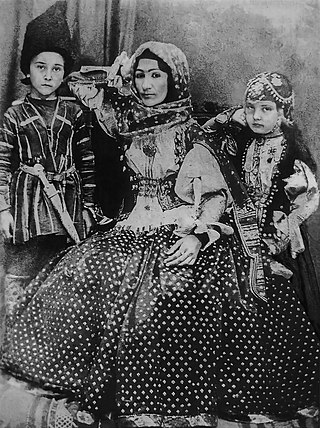
The Javanshirs are a Turkic clan from Karabakh, who are a branch of the Oghuz Turks. Between 1748 and 1822, members of the Javanshir clan functioned as the head of the Karabakh Khanate.

The Baloch in Iran(Balochi: ایرانءِ بلۏچ) are an ethnic group residing in the southeastern and east regions of Iran.
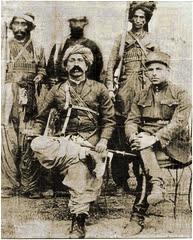
Dost Mohammad Khan Baloch, also known as Mir Dost Muhammad Khan Baluch, was a ruler in Iranian (Western) Baluchistan from 1921 until 1928.

Bārakzai is the name of a Pashtun tribe from present-day Kandahar, Afghanistan. '"Barakzai" is a common name among the Pashtuns and it means "son of Barak" in Pashto. According to the Encyclopædia Iranica, "In the detailed Pashtun genealogies there are no fewer than seven instances of the ethnic name Bārakzī, at very different levels of tribal segmentation. Six of them designate simple lineages within six different tribes located in the Solaymān mountains or adjacent lands... The seventh instance, on the other hand, designates one of the most important Pashtun tribes in numbers and historic role, part of the Zīrak branch of the Dorrānay confederation.
The Yarahmadzai (Shahnavazi) is a Baloch tribe from Iranian Balochistan. The main population of the tribe is settled in an area called Sarhad in the city of Khash. The population of the Yarahmadzais is an estimated 30,000 and they are divided into three smaller groups, Sohrabzai, Hossenzai and Rahmetzai.

Ibrahim Khan Sanjrani Fort is located in Nimruz Province, Chakhansur District, Afghanistan. The castle is believed to have a 400-year history.
The Baloch of Afghanistan are Baloch people who live in the southwestern of Afghanistan, Balochistan Afghanistan along the border with Iran and Pakistan. The number of the Baloch in Afghanistan is estimated at 1 million people or roughly 2% of the population of Afghanistan.














